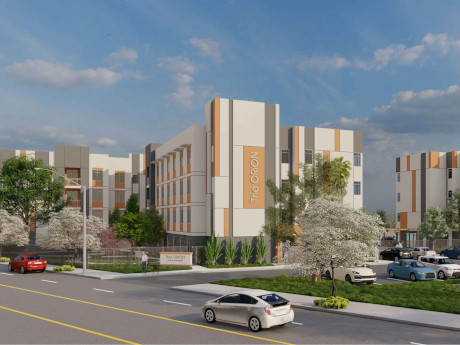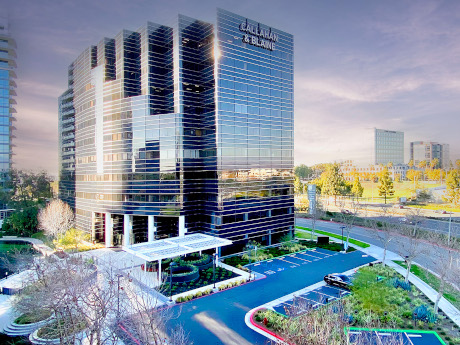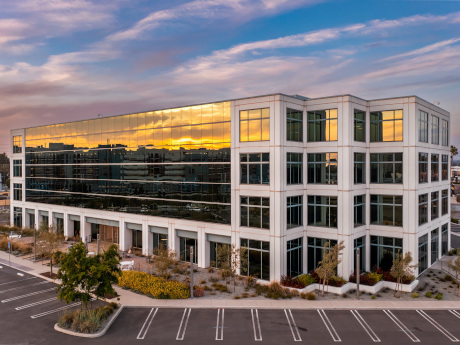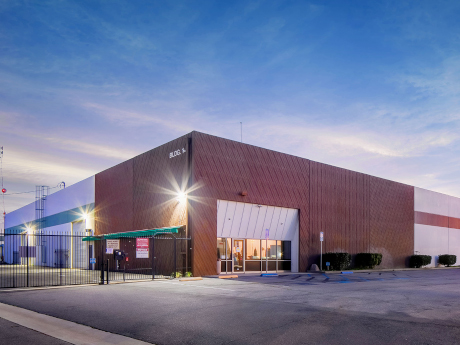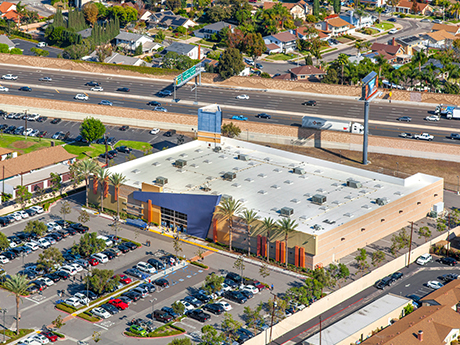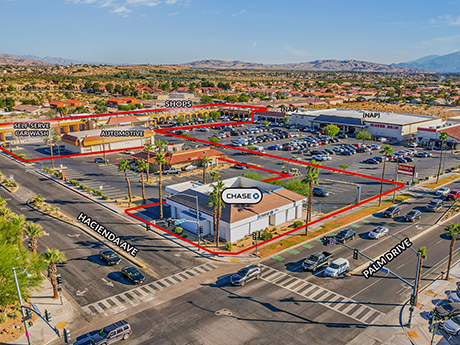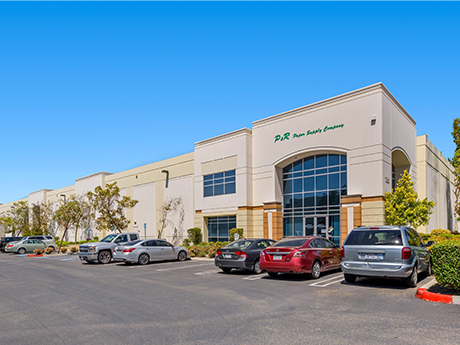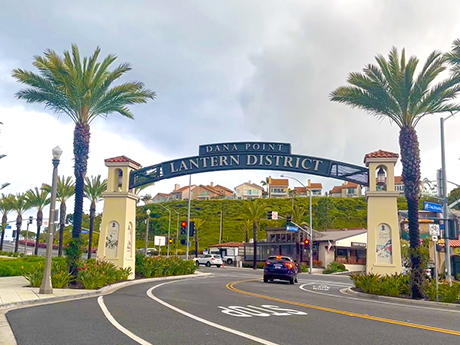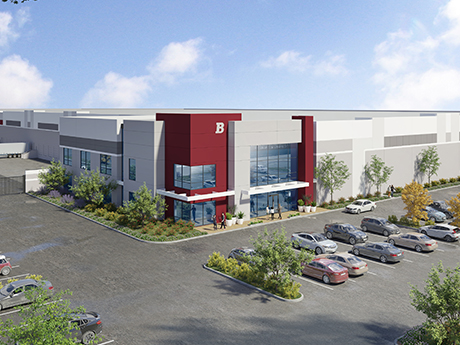— By Pat Swanson — Orange County’s multifamily housing market is still facing challenges. These include rising operating expenses, such as escalating insurance costs and new regulatory standards like SB 721. However, I am optimistic that the county will experience a soft landing compared to other parts of the country. Inflationary pressures and stringent rent control measures in areas like Santa Ana have heightened financial burdens for property owners, impacting profitability and investment decisions. Investors are increasingly favoring higher-quality, long-term assets in premier coastal locations like Newport Beach where properties have shown robust rent growth, averaging 5 percent annually over the past five years. Our team of multifamily advisors works closely with clients to navigate this evolving landscape, emphasizing opportunities in high-demand, flight-to-quality assets. Seller-carry financing and loan assumptions have emerged as highly sought-after options, appealing to buyers seeking reduced upfront costs and flexible financing terms, while allowing sellers to maximize property value without heavy down payment requirements. There is pent-up demand in Orange County’s multifamily housing market, particularly for properties in the right areas. Our expertise lies in identifying and leveraging these opportunities for our clients. By understanding the nuances of market demand and regulatory changes, we can help …
Market Reports
— By Nellie Day — Employers all over the nation are looking for ways to bring employees back into the office. In many cases, it’s been a large ask, as employees have adapted to the work-from-home environment and its perceived perks. One of the biggest strategies employers have undertaken is creating an enticing environment where employees want to be. This can include intriguing office spaces, useful amenities, opportunities for socializing and beautiful outdoor spaces. This strategy can go even further when local businesses and municipalities work together. Such is the case with South Coast Metro Alliance, a non-profit corporation of Orange County, Calif.-based property owners and major businesses that have a long-term investment in the area through ownership and/or long-term leases. The economic development organization, which encompasses north Costa Mesa and south Santa Ana, has worked to ensure employers are proud of the spaces they can offer their employees — and that, in turn, employees are excited to return to the office. WREB spoke to Diane Pritchett, executive director of the South Coast Metro Alliance, to discuss the specific strategies employed by businesses and the South Coast Metro Alliance to reactive the local office environment. WREB: How has the introduction …
— By Marty Pupil — The Orange County office sector continues to battle through the early stages of a market turnaround as tenants adapt to new workplace strategies while balancing employee retention and company production. The market is beginning to thaw, however, as more tenants make decisions on their office space requirements, creating opportunities for tenant activity. Net absorption was negative at the onset of 2024, totaling 338,100 square feet. South County experienced the highest amount of move-outs at 199,002 square feet, followed by the Airport Area with 171,171 square feet. Central County, North County and West County submarkets combined for positive absorption of 32,073 square feet. Right now, positive absorption shows up in pockets of the market and can vary by submarket and quarter. Positive absorption for the overall market will become sustainable when new leasing activity reaches levels that are high enough to compensate for givebacks. Total vacancy in the first quarter rose 20 basis points quarter over quarter to 18.1 percent from 17.9 percent, while increasing year over year from 18 percent. Despite this, current vacancy remains well above the pre-pandemic 10-year average of 13.9 percent. For perspective, vacancy peaked at 19.2 percent during the financial crisis …
Orange County Industrial Sector Experiences Leasing Slowdown, but Investment Remains Active
by Jeff Shaw
— By Erick Parulan — The Orange County industrial market, along with Los Angeles and the Inland Empire, is experiencing a general decline in leasing activity as it navigates the post-pandemic landscape. Tenant demand and leasing have significantly slowed as occupiers adopt a more cautious approach to expansion, with some occupiers deciding to downsize and consolidate their industrial footprints. Tenant occupancies continue to contract in the second quarter, with manufacturers, retailers and 3PL (third-party logistics) companies shedding unused space that may have been acquired during the pandemic frenzy, further increasing sublet availabilities. Orange County sublet availabilities surpassed 3.3 million square feet in the second quarter of 2024, raising total availabilities to 9.5 percent for the quarter. While pandemic-driven rental rates hit historic highs, they have since cooled amid softening demand. Many landlords now offer increased free rent concessions to attract new tenants. Average asking lease rates have been on the decline in Orange County over the past two quarters. They decreased by 5.2 percent from the prior quarter, reaching $1.64 per square foot in second-quarter 2024. High market rents previously deterred many occupiers, but with rents on the decline, some tenants have adopted a wait-and-see approach to see where rates …
— By John R. Read — Orange County’s retail market continues to shine, mirroring its famously consistent weather. Despite challenges like persistent interest rate fluctuations, capital markets volatility and signs of a slowing economy, the region remains a beacon for retailers and investors alike. This resilience has cemented Orange County as one of the strongest retail markets in Southern California and the nation. As 2023 drew to a close, a notable drop in the 10-year U.S. Treasury yield to below 4 percent and signals from the Federal Reserve of potential rate cuts in the upcoming year fueled optimism among real estate investors. However, 2024 has continued to see volatility, with yields reaching mid-4 percent levels and no rate cuts yet implemented. This environment has impacted Orange County’s retail investment sales volume, which saw a 29 percent drop in 2023 from the prior five-year averages and a muted start in 2024. Despite this, investor demand and pricing have remained strong due to Orange County’s high barriers to entry, with average cap rates in the mid-5 percent range and several significant transactions highlighting the market this year. This includes the April sale of an El Pollo Loco in Orange for $3.8 million …
— By Mark Bridge, Managing Director, Bridge Multifamily Team, Capital Markets, Americas, Cushman & Wakefield — Vacancy The vacancy rate is 4.0 percent as of the mid-point in the second quarter of 2024, up 30 basis points (bps) quarter-over-quarter (QOQ) and year-over-year (YOY). The rate has been increasing in eight out of the last 11 quarters from a market low of 2.1 percent in third quarter 2021. The rate is currently 40 bps above the five-year quarterly average of 3.6 percent. Despite this recent increase, Orange County’s vacancy rate is considerably lower than the national average at 7.7 percent. OC’s vacancy rate ranks it second lowest among the nation’s 50 largest markets. Rent The average asking rent per unit currently sits at $2,513 as of the mid-point in the second quarter of 2024. The market high asking rent per unit peaked in fourth 2023 at $2,530 and has come down 0.7 percent since then. Despite the recent decrease, the asking rent per unit is still up 0.9 percent YOY. Given the tightness of the market and a healthy development pipeline, it is likely that the asking rent will remain elevated. Construction/Deliveries There are currently 23 buildings or 8,183 units under …
— By Brad Umansky, President & Head Coach, Progressive Real Estate Partners — Occupancy and lease rates have continued to trend higher throughout Southern California’s Inland Empire retail market as a lack of new construction combined with strong retail demand has kept vacancies near record lows. Looking ahead, factors affecting the market are 99 Cent Only’s bankruptcy, the substantial slowdown in sales activity, and the minimum wage increase to $20/hour for fast food workers. Occupancy & Lease Rates Occupancy is currently reported at 94.3% by Costar, but removing spaces 10,000 SF or larger, results in occupancy of 97.2% which demonstrates the lack of available shop space. In my 30+ years of working in this market, I have never seen such a lack of options for shop tenants. As a result, when shop spaces become available owners are mostly commanding a higher lease rate than what the previous tenant was paying. 99 Cent Only Bankruptcy Dominates Recent Activity Since April, when 99 Cent Only declared bankruptcy and promptly decided to liquidate all 371 stores in the chain, industry participants have been analyzing these locations. As of June 2nd, it has been determined that Dollar Tree is acquiring 170 of the …
— By Mark Lewkowitz, Executive Vice President, Colliers — The current interest rate environment has seemingly slowed the investment sales volume down, but strength remains with user sales. Over the last two years, users were more frequently being outbid for industrial properties (partially stabilized and vacant). Now, with the investment herd very thin, it has allowed users and buyers to take a crack at the opportunities. The users face the same hurdles where the cost of capital is not cheap, but it is more palatable when their business pays the mortgage or rent. I anticipate vacancies ticking up through Q4 2024, but beginning in Q1 2025, I feel confident we will see transaction frequency rise. In turn, the vacancy rate will lead to a softening of rental rates and increased concessions, but the fundamentals are strong for the industrial market, and it will turn on a dime in Q1 2025. Majestic Sunroad continues progressing significantly with the Landmark at Otay projects, delivering roughly 845,000 square feet by Q4 2024. Their projects are significant because they are among the first with 36’ clearance heights and trailer parking, something the market has not seen. Phelan Development has also introduced some incredibly functional 32’ warehouse …
— By Kelly Reenders — The California coastal city of Dana Point sought to redevelop its underutilized Town Center, with the goal being to create a pedestrian-friendly live-work-play neighborhood that encouraged further reinvestment and development. Now called the Lantern District, the four-block downtown is anchored by Prado West, a three-building mixed-use complex with 109 apartments and nearly 30,000 square feet of ground-floor restaurants, shops and public outdoor space. Though the endeavor is now something the city and residents can be proud of, the project had its share of challenges. These included gaining community support for proposed changes, in addition to overcoming a leasing timeline that included a pandemic shutdown. Embracing the Local Community For Dana Point and Prado West’s developer, Raintree Partners, the solution was to embrace local entrepreneurs. Raintree recognized the value of encouraging other owners to reinvest in their properties early on as the downtown plan took shape. This caught the attention of Max Fisher, owner of the Shwack Beach Grill, which sits across the street from Prado West. Soon enough, Fisher and his partners agreed to open HomeSlice, an Italian- and pizza-focused restaurant, in Prado West across from their existing grill. As local owners, the partners felt the …
Badiee Development has logistics and industrial projects throughout the Western U.S., but its current focus is the region’s three S’s: San Diego, Sacramento, Calif., and Salt Lake City. “Badiee Development is prioritizing leasing at our existing projects in San Diego and Sacramento, and entitling future projects in San Diego, Sacramento and Salt Lake City,” says Ben Badiee, the firm’s founder and CEO. “Our company holds a ‘land bank’ with plans to develop more than 2 million square feet across four distinct projects in three markets.” San Diego Badiee’s headquarters is ripe with industrial ventures for the firm. These include the two-building, 242,969-square-foot Sanyo Logistics Center and the 38-acre Britannia Airway Logistics Center, both of which are being built near the Mexican border in Otay Mesa. Britannia Airway has also been entitled for an interim use of industrial outdoor storage (IOS), allowing the project to accommodate about 1,000 trucks and trailers. “Being in our ‘backyard,’ Otay Mesa has proven to be a highly successful market for the firm,” Badiee says. “It is at the forefront of the onshoring/nearshoring trend for the U.S. and Mexico, and land availabilities are scarce.” Sacramento Land scarcity has also been a driver for Badiee in Sacramento …


